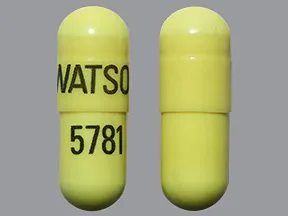
Interactions between medications aren’t the only type of interaction. If you experience symptoms such as a cough that doesn’t go away, fever, or difficulty breathing while taking nitrofurantoin and methotrexate, contact your healthcare provider right away. Lung-related side effects are more likely to happen when you take them together.īased on your medical history, your healthcare provider can tell you more about the risks and benefits of taking nitrofurantoin and methotrexate at the same time. In rare cases, nitrofurantoin can also cause severe lung reactions. It can cause a number of side effects, including potentially serious lung problems. However, methotrexate can be a tricky medication to use. Methotrexate is a medication that’s used to treat a variety of health conditions, including rheumatoid arthritis, cancer, and more. If you have a vaccination scheduled in the near future, make sure to ask your local pharmacist about medication and vaccine-related questions. Other vaccines, such as COVID-19 vaccines and the flu shot, aren’t affected by this interaction. If you’re planning on taking the oral typhoid vaccine ( Vivotif), try to wait 72 hours (3 days) after finishing your nitrofurantoin prescription. According to the CDC, if you just finished your nitrofurantoin prescription, you should wait 14 days (2 weeks) before taking the oral cholera vaccine ( Vaxchora).

If you have an international trip planned in the future, it’s important to plan ahead as much as possible. If you take nitrofurantoin with certain live vaccines, the vaccines may be less effective. But even though they’re used for similar reasons, they don’t always mesh well.
#Nitrofurantoin mono mac free#
Nitrofurantoin and live vaccines have the same goal - keeping your body free from infection. This interaction also increases the odds of experiencing side effects like nausea and headache. This makes nitrofurantoin less effective at fighting UTIs. It can elevate nitrofurantoin levels in your blood, but it can decrease levels in your urinary tract. While probenecid can make certain antibiotics more effective, nitrofurantoin isn’t one of them. It can also make antibiotics like amoxicillin more effective at fighting infections. Probenecid is a medication that’s commonly used for gout. Make sure to speak with your healthcare provider before trying any new medications. Mylanta (aluminum hydroxide/magnesium hydroxide/simethicone)Īs an alternative to magnesium-containing antacids, consider other OTC products that may treat heartburn symptoms, like Tums (calcium carbonate) or famotidine (Pepcid AC, Zantac 360). Gaviscon (aluminum hydroxide/magnesium trisilicate) Common over-the-counter ( OTC) antacids with magnesium include: While other types of magnesium don’t “stick” as much to nitrofurantoin, you may also want to avoid all magnesium-containing antacids - and magnesium supplements - as a precaution.
#Nitrofurantoin mono mac full#
If this happens, you may not get your full dose of nitrofurantoin, which can lead to an undertreated UTI. This likely happens because magnesium trisilicate sticks to nitrofurantoin in your gut, making it harder for nitrofurantoin to do its job. When you take them together, your body absorbs less nitrofurantoin. It’s best to avoid taking nitrofurantoin with antacids that contain magnesium trisilicate. Magnesium-containing antacidsĪntacids are a go-to treatment for heartburn, but some of them may not be the best choice while you’re taking nitrofurantoin. We’ll discuss five of the most notable here. While nitrofurantoin has fewer interactions than many other antibiotics, it still has a few to be aware of. Drug interactions are one important factor to consider. Nitrofurantoin (Macrobid, Macrodantin) is a prescription antibiotic that’s used to treat and prevent UTIs.Įven though nitrofurantoin is beneficial in many ways, it has its risks. If you start to experience these symptoms, your healthcare provider may prescribe a medication like nitrofurantoin. If you have a UTI, it’s common to have symptoms like cloudy urine, pain or burning while peeing, and lower abdominal pain. They happen when certain bacteria make themselves at home in your urinary tract.

Some people get them every now and then, and others get them routinely. Urinary tract infections (UTIs) are an all-too-common part of life for many people.


 0 kommentar(er)
0 kommentar(er)
